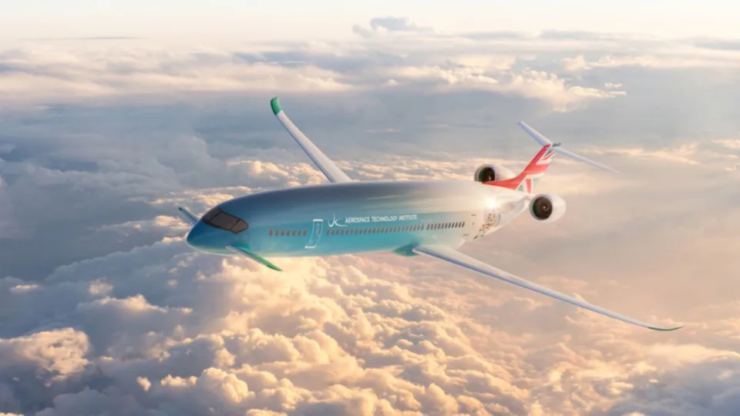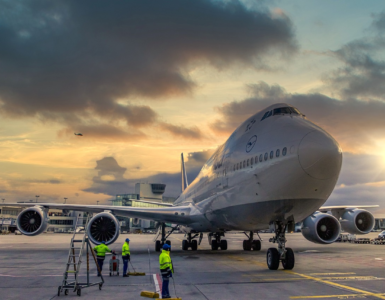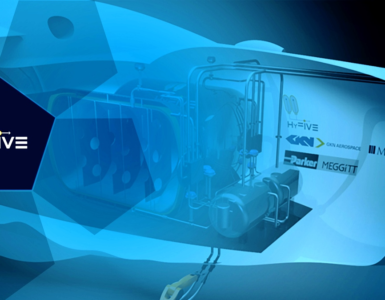Aerospace experts design liquid hydrogen powered jet that can travel halfway around world with no layover: ‘A pivotal moment’.
A breakthrough liquid hydrogen-fueled aircraft concept developed in the United Kingdom could take passengers from London to San Francisco with no layover.
That’s because the massive plane would have an operational range of 5,250 nautical miles (equivalent to air miles) and wouldn’t need to land to fill up with gas. This would provide more than enough range for the flight of roughly 11 hours and 4,664 nautical miles.
This concept plane was developed by the FlyZero project, a program led by the Aerospace Technology Institute with the goal of providing air travel with no pollution (zero-carbon) in the next decade, as the agency states on its website.
🔥 What about we co-host a webinar? Let's educate, captivate, and convert the hydrogen economy!
Hydrogen Central is the global go-to online magazine for the hydrogen economy, we can help you host impactful webinars that become a global reference on your topic and are an evergreen source of leads. Click here to request more details
Which of the following sustainable changes would make you most likely to choose a particular airline?
Using cleaner fuel
Reducing in-flight waste
Making it easy to choose low-emissions itineraries
I don’t pay attention to sustainability when I fly
Click your choice to see results and speak your mind
The institute is a government-industry partnership working on “transformative” technology. As a result, the research’s success could revolutionize our transportation system.
The largest of the crafts designed by the project would be twice the size of a huge Boeing 737 and powered by extremely cold liquid hydrogen, which will be stored onboard in tanks at minus-418 degrees Fahrenheit. The plane will seat 279 passengers, according to the project’s executive summary.
Aviation accounts for 2.5% of all carbon pollution, and decarbonization of the industry has become a hot topic lately. Liquid-hydrogen fuel may be a solution to this, and Reuters reported last year that developers like the FlyZero team see it as a bigger swing for effecting change than electric battery innovations.
David Debney, The chief engineer of aircraft integration for the FlyZero project, said:
If I’m creating a 20-seat electric aircraft, it’s a great solution, but its impact is tiny.
“With FlyZero we were looking at bigger things because, ultimately, if we’re getting anywhere near net zero in 2050, that’s the hard nut to crack.”
That 2050 target is a big one for the industry. Said Aerospace Technology Institute CEO Gary Elliott in a strategy guidebook for plans through that year, while still highlighting that action must not be delayed to reach cleaner energy goals by then: “The aerospace sector is at a pivotal moment. Public concern about the environment has continued to increase in response to growing evidence about the impact of humankind’s activities and the need to take more urgent action to mitigate climate change.”
This isn’t the most recent project to tackle the issue, either. Late last year, Germany-based developer H2FLY completed the world’s first piloted flight of an electric aircraft powered by liquid hydrogen.
Liquid hydrogen is clean-burning, though it is often made using natural gas, the National Renewable Energy Laboratory reports. The U.S. Energy Department adds that the liquefying process uses more than 30% of hydrogen’s energy content and is costly.
However, the substance is proving to be a reliable long-distance fuel, with innovations even in the trucking sector. Other research for use in air travel is also underway. That’s in addition to electric plane designs that are starting to become more feasible with unique projects elsewhere, with some backed by government support, like FlyZero was.
The U.K. Government reported in 2021 that the project had £15 million (about $19 million) of funding to research the FlyZero craft, and more money will be needed to bring the vision to fruition. The project summary concluded that an experimental hydrogen-powered, transatlantic aircraft is “feasible” by 2030, when other hydrogen projects are also expected to be near completion.
Elliot said in the ATI guidebook:
If we are to succeed, there are significant unknowns and challenges to overcome, and international competition will be intense.
“Speed is essential to achieving our goals and increasing our market share,”
READ the latest news shaping the hydrogen market at Hydrogen Central
Aerospace experts design liquid hydrogen powered jet that can travel halfway around world with no layover: ‘A pivotal moment’. source








